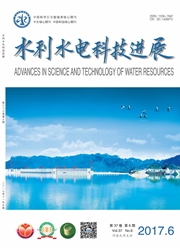

 中文摘要:
中文摘要:
利用遥感技术并通过多渠道信息对照分析得到盐城市规划阶段内的岸线变化,结合实地调研、专家咨询等对垦区的空间布局、用地功能定位、滩涂资源持续供应能力、生态环境保护以及综合试验区建设等方面进行评估n结果表明:盐城市滩涂开发匡围进展总体偏慢,应根据工程区域的自然条件变化、地方的经济发展需求等对下一阶段的开发进行局部调整;盐城市可开发的滩涂资源量仍有较大剩余,基础设施建设总体上与垦区的开发进展相协调,可持续开发能力较强;大规模滩涂开发利用将对水沙动力条件、海洋生态环境等多方面产生影响,应针对江苏沿海环境特征,建立围垦环境影响的综合评价体系,为今后滩涂的可持续开发利用提供依据。
 英文摘要:
英文摘要:
Based on remote sensing technology and its comparison with different types of information, changes in the coastline in Yancheng City were identified during the planned period of reclamation. Combined with field investigation and expert consultation, evaluation was carried out in terms of spatial layout of the reclamation area, functional zoning, sustainable supply capacity of tidal flat resources, ecological environmental protection, and construction of integrated experimental areas. The results show that, due to the slow development and reclamation of tidal flats in Yancheng City, the future reclamation plan should be locally adjusted according to the natural conditions and economic development requirements. With abundant tidal flats suitable for future development in Yancheng City, and with infrastructure construction coordinated with the development progress of the reclamation area, the tidal flat resources have high sustainable development capacity. Large-scale development and utilization of tidal flats will influence the dynamic conditions of water and sediment as well as the marine ecological environment. It is pointed out that an integrated reclamation environmental impact assessment model should be built based on the costal environmental characteristics, so that it will provide a basis for the sustainable development and utilization of tidal flats in the future.
 同期刊论文项目
同期刊论文项目
 同项目期刊论文
同项目期刊论文
 Mechanisms underlying the regional morphological differences between the northern and southern radia
Mechanisms underlying the regional morphological differences between the northern and southern radia Modeling sorting dynamics of cohesive and non-cohesive sedimentson intertidal flats under the effect
Modeling sorting dynamics of cohesive and non-cohesive sedimentson intertidal flats under the effect Coastal evolution of Yancheng, northern Jiangsu, China since the mid-Holocene based on the Landsat M
Coastal evolution of Yancheng, northern Jiangsu, China since the mid-Holocene based on the Landsat M 期刊信息
期刊信息
